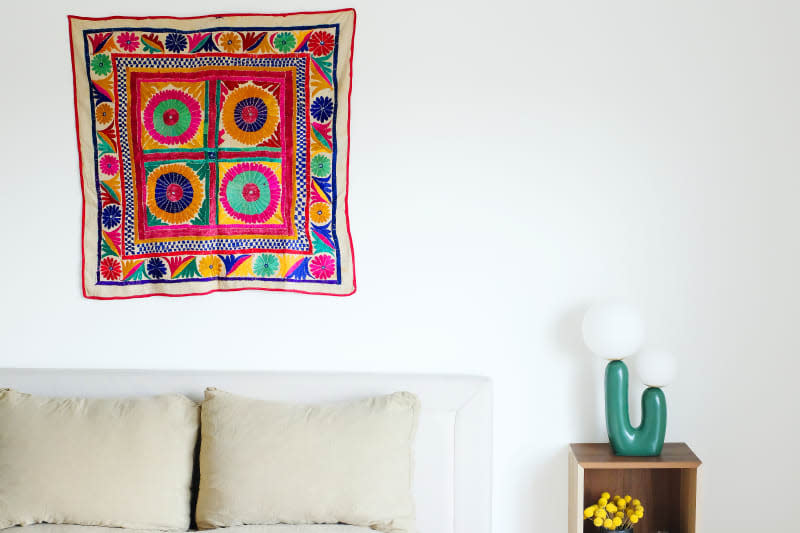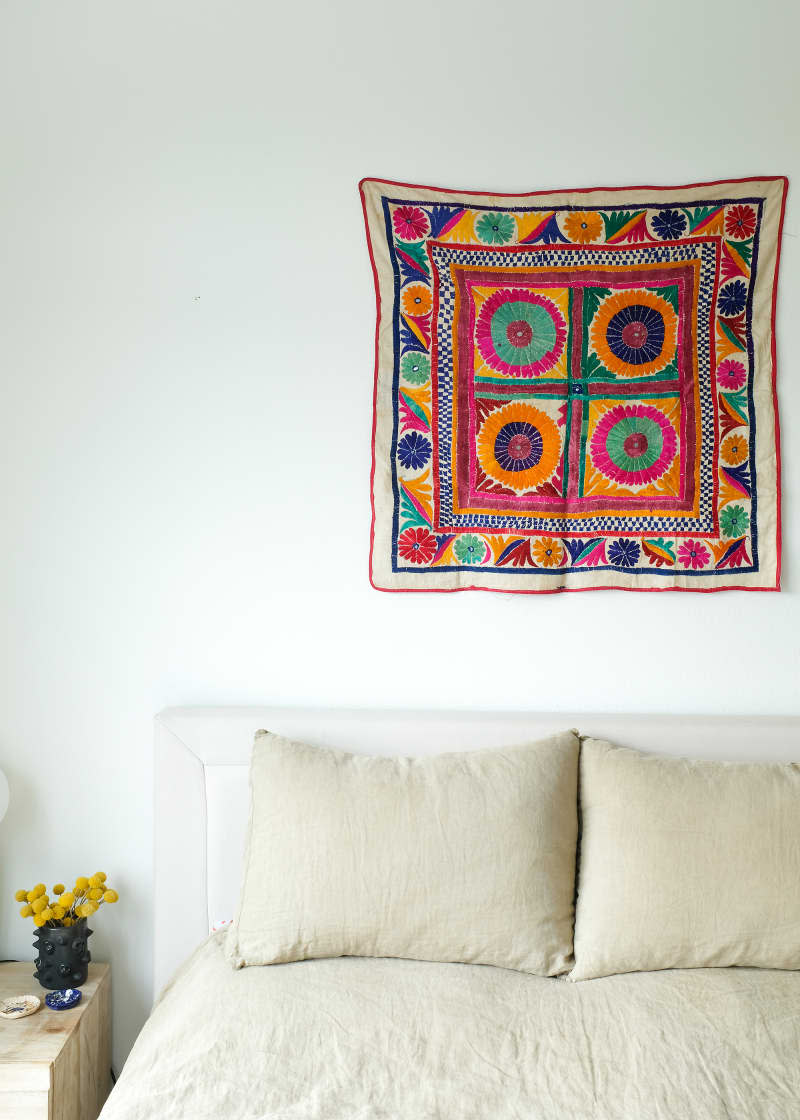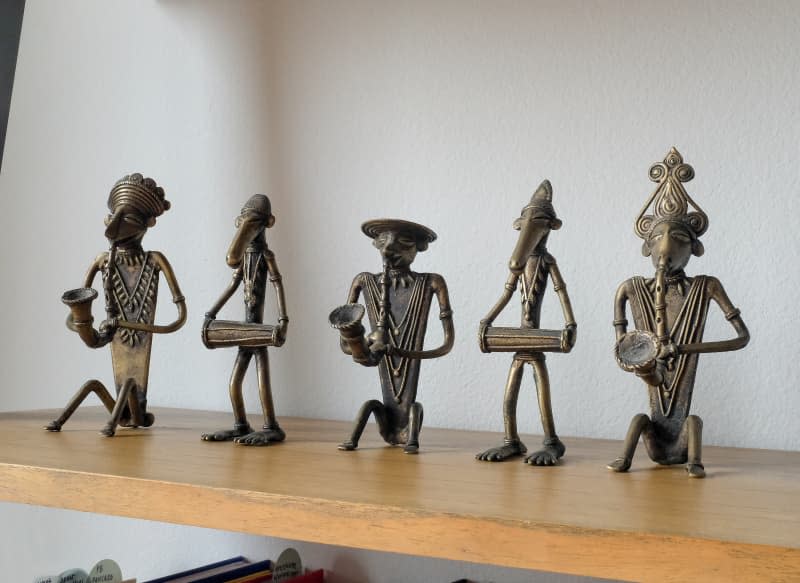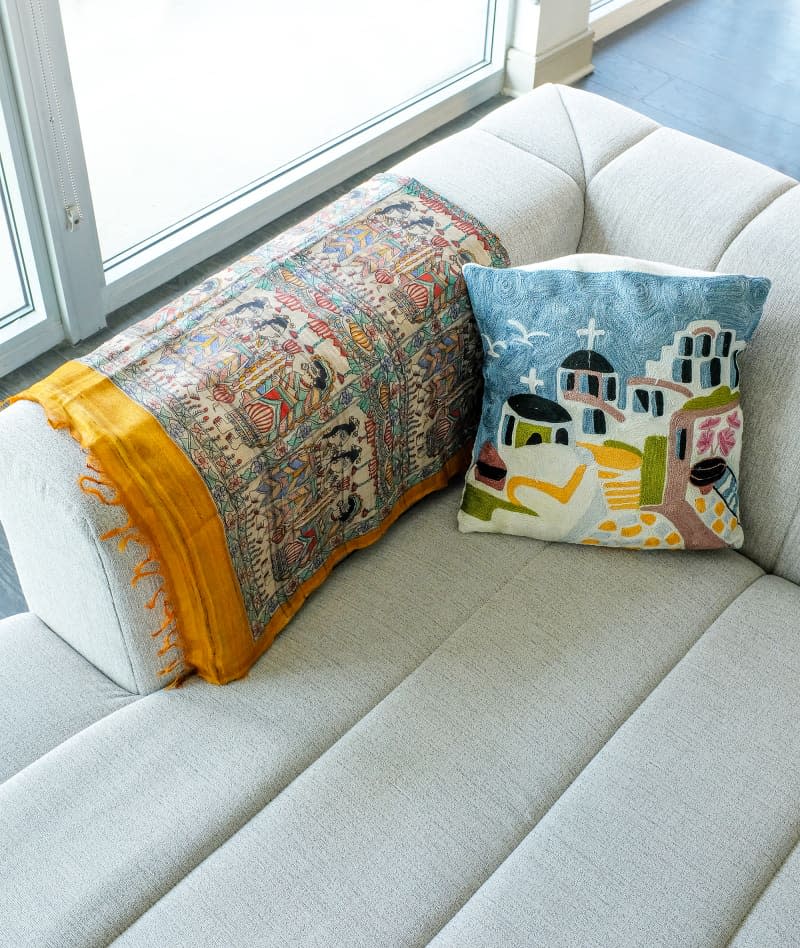My Favorite Decor Connects My Home to My Indian Heritage

Immigrants, as well as first and second-generation Americans, often have a special relationship with items from their home countries. These items are often inherited, and can serve as an anchor for them when they might feel culturally adrift.
I spoke to AAPI designer Priya Vij, who started Hapny Home, a cabinet hardware company, and was featured in our Design Changemakers, about her favorite items that connected her to her Indian heritage. Vij, a first-generation American, has many Indian pieces in her home, including prints and jewelry boxes, but chose to spotlight three that especially stand out to her. Here’s what she had to say about them.

Gujarati Tapestry
This colorful tapestry was gifted to Vij by family friends who lived in New Delhi, the capital of India, in the 1970s, and its style originates from the western Indian state of Gujarat. According to Vij, there are approximately 16 different types of embroidery practiced in Gujarat, with each community practicing its own style that shows off different motifs and patterns, giving the piece a unique visual identity.
“This is ‘kutch’ or ‘kachchi’ style embroidery, which often features colorful threading with embedded mirror work. Kutch embroiderers typically learn the skill from their parents and grandparents and produce these beautiful pieces of art without any stencils, tracing, or patterns,” she explains. Sellers from these communities frequent the large trade markets in New Delhi, which is where Vij’s family friends bought the tapestry. It eventually made its way to her as a wedding gift and hangs above her bed now, though she hopes one day to get it framed.

Brass Statues
Vij’s family visited New Delhi every December during her childhood, and always stopped at Cottage Emporium, a collection of shops that feature local artwork, textiles, handicrafts, and accessories from several states across India. These Dhokra tribal brass statues were collected across several of these trips, and show figures playing traditional Indian instruments like the flute and the dhol. Vij borrowed them from her parents in Houston in 2015, when she was looking for furniture and decor to fill up her new home in Austin, and now they live on her bookshelf. “[I] keep ‘forgetting’ to give them back. They still have over 10 more at their house, so I think I’m safe!” she says.
These statues hold a particular meaning for Vij, who grew up playing piano and listening to music that featured these traditional Indian instruments. The metalwork is typical to the Indian state of West Bengal and uses the technique of lost wax casting, in which the wax product mold is destroyed after one use, making each piece one of a kind.

Dupatta Blanket
Dupattas are long scarves, used as decorative accessories when wearing a salwar-kameez or similar outfit. This particular dupatta features prints typically seen in the western Indian state of Rajasthan, known for its rich, colorful textiles. Vij loved the design and pops of color, which also appealed to her mother, the original owner of the dupatta.
When her mother gifted it to her, Vij decided to use it as a decorative piece instead of saving it for the one or two times in the year that she wears traditional Indian clothes. She added a thicker backing to it, and now it functions as a decorative blanket on her couch. “I already had a ton of artwork on the walls, so turning it into a blanket felt like a special way to showcase it. It’s neutral enough to complement the other design elements of my space while still having enough vibrant colors to stand out,” she explains.

